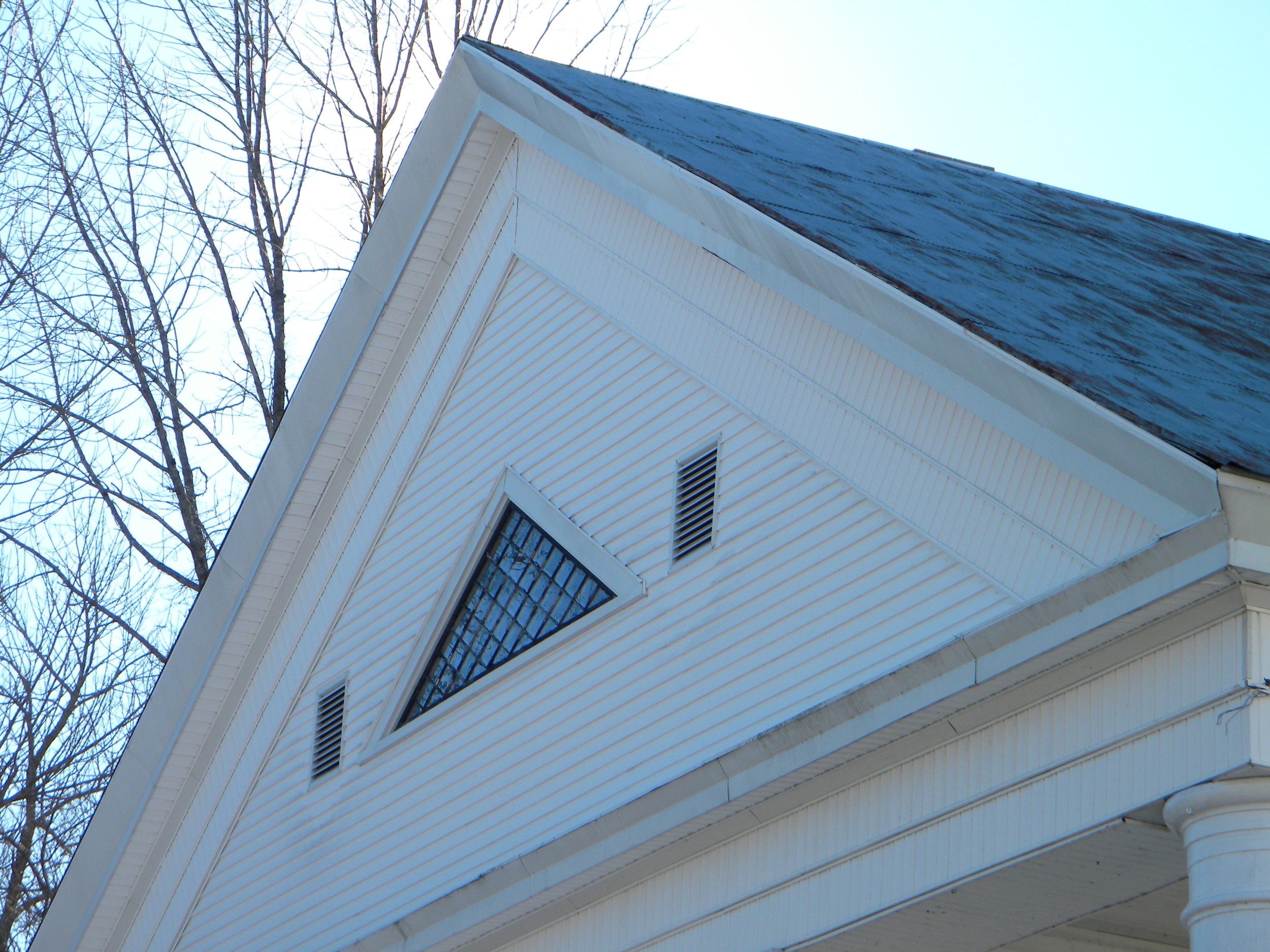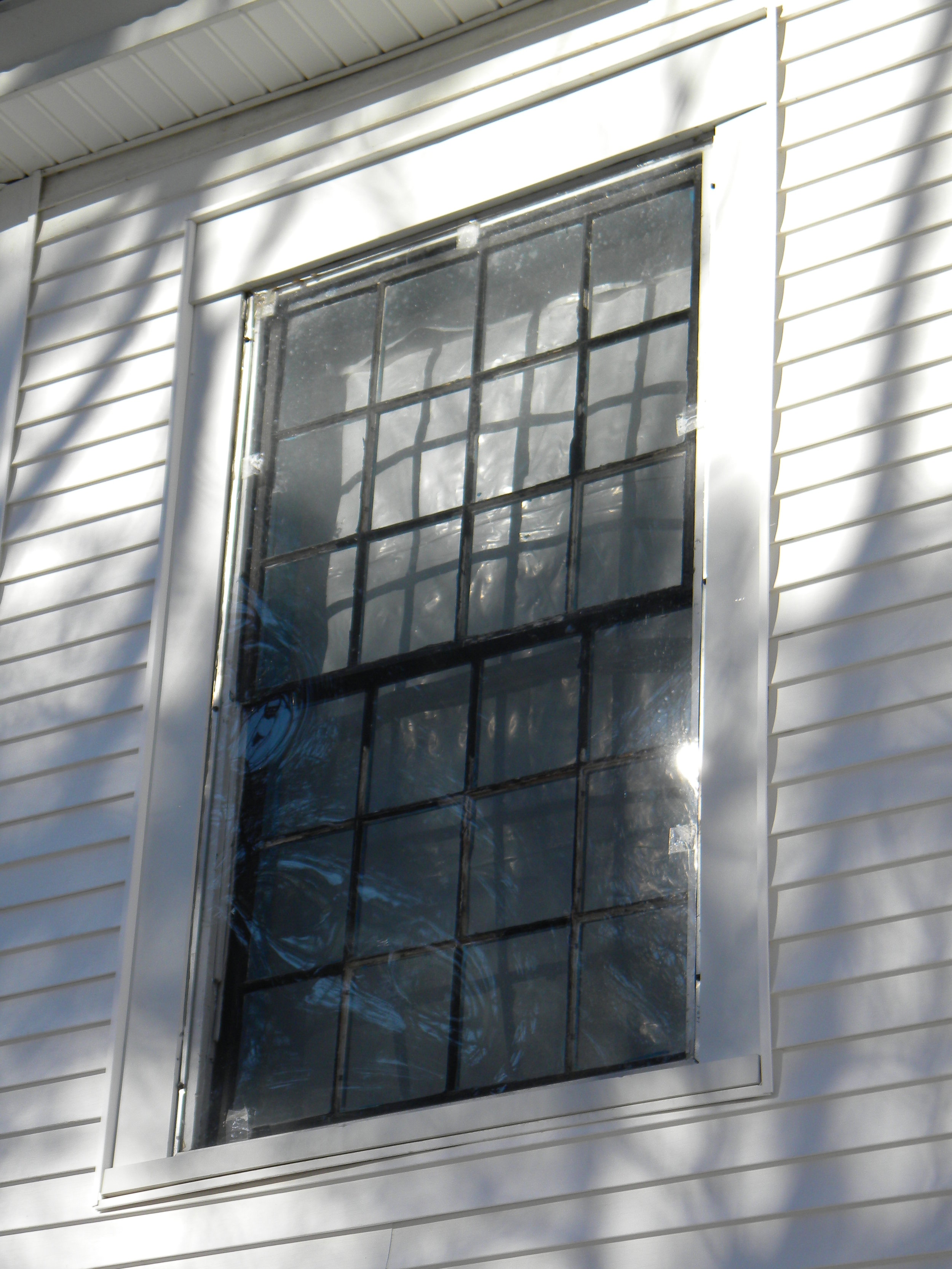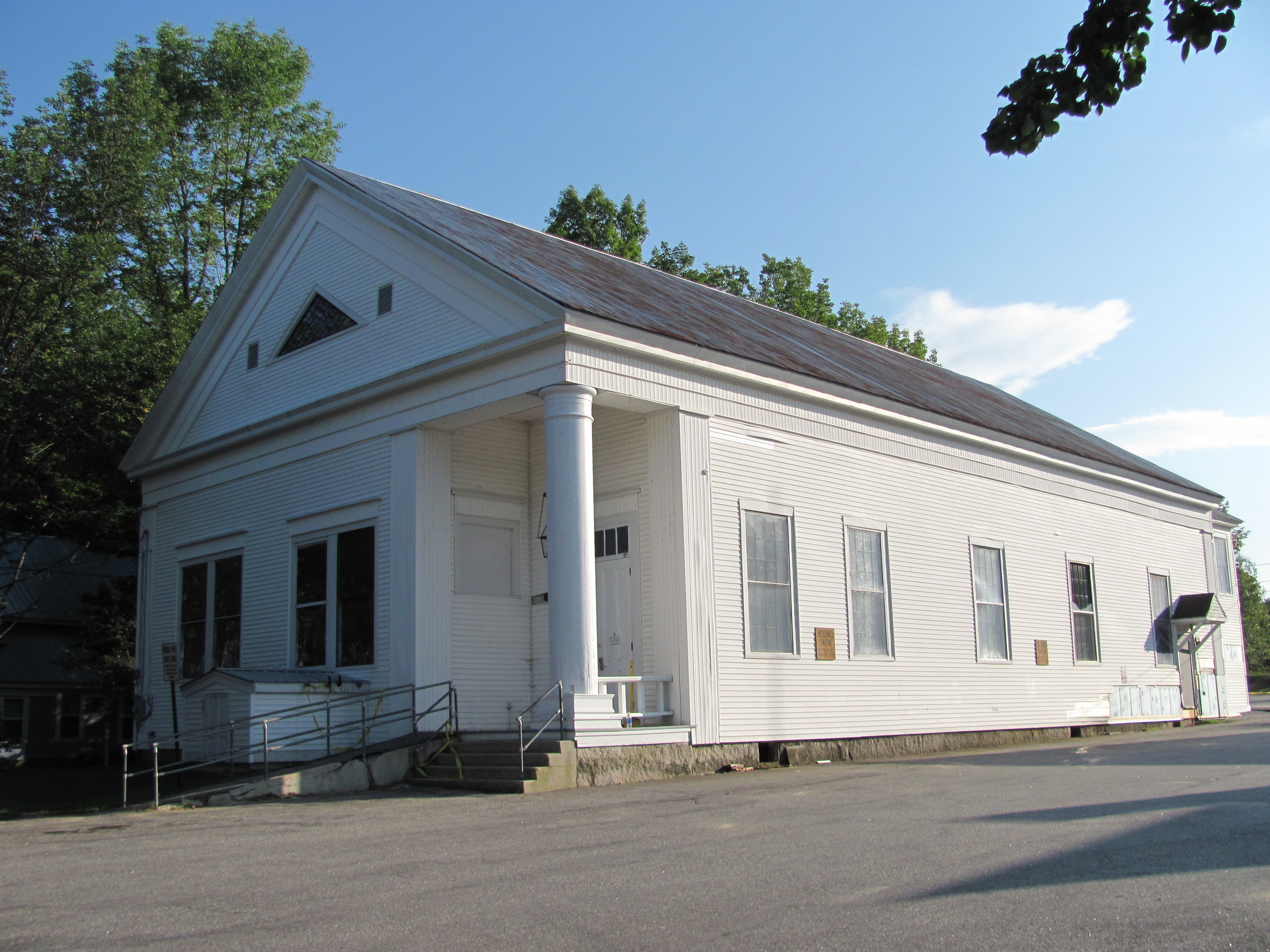



The Story
Originally known as the Town House, Bridgton Town Hall was built in 1852 as a replacement for the 1791 Bridgton Meeting House. Built as the largest single meeting space for the town of Bridgton, the Town Hall’s central meeting room was finished with a plaster arched ceiling, flanking platforms for seating and a large central cast iron stove for heat. During a 1902 expansion, rooms were added at the back and the fixed seating was removed from the meeting room. The current asymmetrical façade was also constructed in this year: the front door was moved to the right and the front right corner of the structure was cut away to create an entry porch with a large classically styled column placed at the outside corner. The rooms to the left of the porch became the new town offices. Much to Bridgton’s surprise, the builder installed the Doric column upside-down, and the mistake has never been corrected. Throughout its history, the Town Hall has been used for annual Town Meetings, socials, concerts, and other community functions. Recently, the town offices were moved, and the former offices in front were converted to men’s and women’s locker rooms. The town hall became recreation center, hosting activities like basketball, Tai Chi, and ping pong on a daily basis in addition to being a municipal and community center.
The Threat
Despite serving as excellent example of how an historic building can be adapted to new uses to meet the changing needs of a community, some members of the Bridgton community placed two referendum questions on the ballot to stop the Town from continuing to invest in the building, both of which were defeated by the voters.. This group argues that tearing down the historic building in order to make way for new development would increase the tax base. Town Selectmen accepted a bid in June, 2015 to complete necessary repairs to the sills, foundations and to upgrade mechanical systems. Community members recognizing the value of this historic building have won the latest fight, but the issue remains contentious, and with additional funding likely to be needed over the coming years, the fate of the building is not yet secured. While the debate seems to be framed as either the town restores the building or tears it down, there are also many examples of historic structures that have been successfully adapted by private parties to become cultural and economic drivers for downtowns.
The Solution
In response to the voters, the Selectmen should continue to invest in the building while also actively seeking new community users for the space, which increases the social and economic vibrancy in town. A future option could also be to sell the building to a new owner interested in adaptive use – a far better option than demolition, which should be taken off the table.

